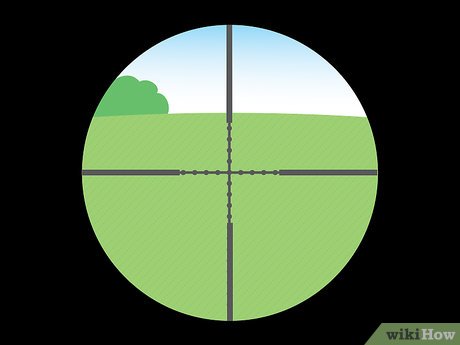
Contents
Choosing the Best Riflescope for Your Western Big-Game Rifle
If you’re hunting in dark timber, you’ll need a scope for your western big-game rifle. Here’s how I choose the best hunting scope for my ultimate western big-game rifle and cartridge.
A good scope magnifies and sharpens the target, brightens it, and keeps it focused. However, riflescopes come with downsides like adding weight, bulk, and expense. They can also unbalance a rifle, snag on brush, fog up, leak, fail to hold zero, or be set at the wrong magnification level. So, let’s prioritize a scope’s job:
1. Hold zero. The reticle must point where the rifle shoots. This requires rugged durability, precision adjustments, and being waterproof and fogproof.
2. Project a clear, bright image. You need a clear image during lowlight conditions when game is most active. This requires optical quality, including image sharpness, brightness, and contrast.
3. Be portable and convenient. Aim for the lightest, lowest-profile scope with moderate power and objective lens size.
4. Easy to operate. Keep it simple for hunting purposes.
Many popular scopes meet the above criteria, excluding the need to drag around a heavy scope. Most of my western hunting is done with scopes weighing 10 to 14 ounces. These scopes are easier to carry, potentially more rugged, and durable. So, let’s dive into our priority list.
Holding Zero
Holding zero is critical, and you can gauge a scope’s likelihood of doing so through factors like price and brand reputation. While more expensive scopes are usually built with higher quality materials and workmanship, mid- to low-priced scopes can also be durable. Test them in-store and pay attention to how well-made they feel and if the turrets have positive clicks. Lifetime guarantees and durability hints like waterproof, fogproof, and dustproof features are also essential.
Big and complicated scopes are more likely to break due to the pressure put on mounts, screws, and glues during recoil. In contrast, fixed-power scopes with fewer bells and whistles are more reliable. Waterproof, fogproof, and dustproof features are also crucial for hunting scopes.
Power, Brightness, and Objective Lens Size
Don’t be swayed by the “celestial observatory” sales pitch. Power and brightness can be overdone. Most hunters can’t tell the difference in light transmission between scopes. The key is resolution or sharpness, which is somewhat overrated. While perfect resolution is preferred, you can still target and hit game animals with “soft” scopes that hold zero.

For brightness, the size of the objective lens is important, but keep in mind that magnification limits the light that gets out. The rule of thumb is to match the diameter of the exit pupil (EP) to your pupil’s diameter. Anti-reflection coatings are critical to reduce light reflection loss. Fully multi-coated scopes are bright enough to clearly see the reticle against game animals in lowlight conditions.
ED or HD lenses minimize color fringing for better resolution but are only noticeable at higher magnifications. When it comes to power, most hunting situations rarely require shooting beyond 400 yards. Even scopes with lower magnification like 7X can be effective in targeting game animals.
Pick a Portable Hunting Scope
The weight of the scope matters because you’ll be carrying it for miles. A 13-ounce scope that meets all your requirements is much more preferable than a heavier one. The brightness of the scope does not depend on the tube diameter, but rather on the objective diameter, magnification, and anti-reflection coatings. Field of view (FOV) is also essential, but you don’t need a huge objective for that. FOV becomes less critical when you line up the shot.
If you can find a lightweight 30mm scope that meets your requirements, go for it. However, a 1-inch scope like the Leupold VX-3HD 4.5-14×40 CDS offers similar performance while being nearly half a pound lighter than a 30mm scope.
Simple Hunting Scopes
For real-world hunting scenarios, you don’t need a scope that requires complex operations. Consider a Maximum Point-Blank Range zero to simplify your aim. A custom dial with precise distance points can also make turret adjustments easier.
When selecting reticles, go for 2nd focal plane, which is easier to see at all times. First Focal Plane reticles can become difficult to see at lower magnifications. Remember, the simpler the operation, the less room there is for error.
Bells and Whistles
Aside from the essential factors mentioned above, you can consider additional features like reticle style and parallax adjustment dials. While parallax control is crucial for long-range targeting, it’s usually unnecessary for hunting game at close range. Exterior lens coatings are also important for fogging and scratching prevention.
A Final Word on Riflescopes for Western Big Game
Choosing a hunting scope requires focusing on reliable performance and efficiency. Large, heavy, and complicated scopes offer few advantages for hunters. Smaller, lighter, and simpler scopes are the way to go. So, prioritize durability, portability, ease of operation, and brightness for the best hunting experience.

A skilled hunter, dedicated conservationist, and advocate for ethical practices. Respected in the hunting community, he balances human activity with environmental preservation.
